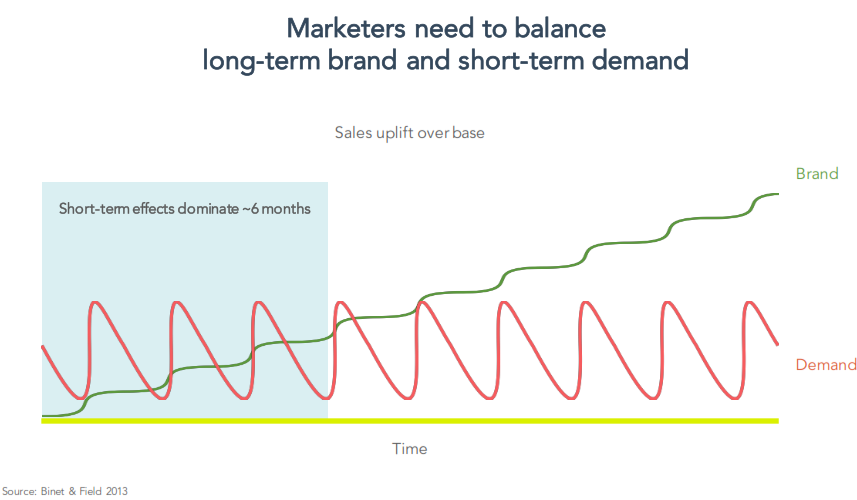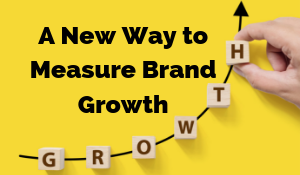 Last week the Red Javelin team attended Inbound 2019. In addition to the public event, as a Gold Partner, we participated in Hubspot’s Partner Day. It was during Partner Day that we sat in on a session where the research presented was eye-opening. We realized that all of our B2B clients could benefit from it. It helped us understand a new way to measure brand growth that can be easily understood by the C-suite. Yassss...the Aha Moment....Finally! There is a new way to justify your budget and measure brand contribution to the bottom line.Ty Heath, the Global Lead of the B2B Institute at LinkedIn, gave the talk. She is definitely someone to watch. She is an excellent presenter, she delivered a convincing case, and she really knows her way around digital.
Last week the Red Javelin team attended Inbound 2019. In addition to the public event, as a Gold Partner, we participated in Hubspot’s Partner Day. It was during Partner Day that we sat in on a session where the research presented was eye-opening. We realized that all of our B2B clients could benefit from it. It helped us understand a new way to measure brand growth that can be easily understood by the C-suite. Yassss...the Aha Moment....Finally! There is a new way to justify your budget and measure brand contribution to the bottom line.Ty Heath, the Global Lead of the B2B Institute at LinkedIn, gave the talk. She is definitely someone to watch. She is an excellent presenter, she delivered a convincing case, and she really knows her way around digital.
B2B Brand Awareness Challenges
Every single one of our B2B clients grapples with these two challenges:
- The first is how to effectively measure brand awareness. As we all know, buyer journeys are not linear and not all brand awareness activities create a measurable digital trail. The question that CMOs struggle to answer is -- does the investment in brand awareness pay off?
- The second challenge is -- what is the right investment in demand generation versus brand awareness? Some organizations will not spend a dime unless it results in a sales lead. Is that the right approach?
Drumroll please….
There is research that shows a direct correlation between Share-of-Voice (SOV) and Share-of-Market (SOM).
If your share-of-voice is greater than your market share then your brand is growing. If your market share is greater than your share-of-voice, then your brand is shrinking.
This graphic below is very powerful for CMOs when working with the C-suite. This graph gives you the tools to justify your budget and measure your contribute to the bottom line in a strategy way. CEOs and CFOs care a lot about market share and this is the first research we have seen that directly ties share-of-voice (i.e. PR and thought leadership activities) to market share and brand.
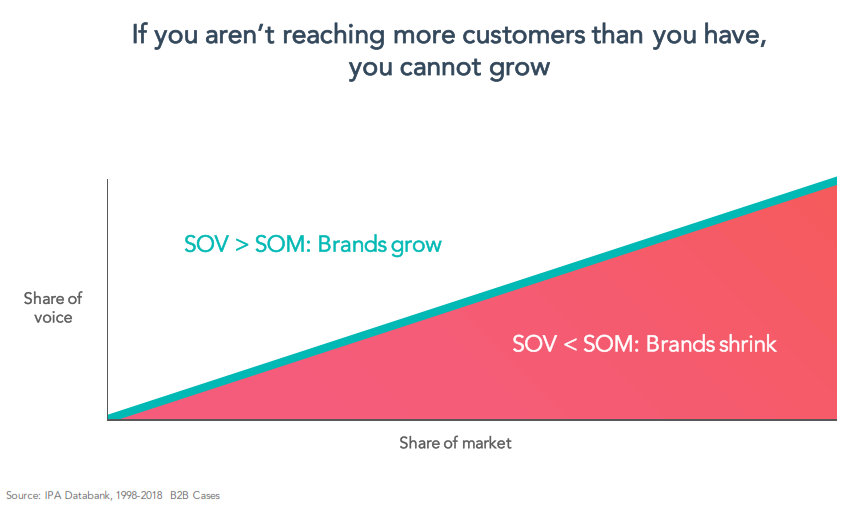
The following graphic shows that 10% of excess share-of-voice results in a 0.7% gain in market share! The louder you are, the more market share you are likely to gain.
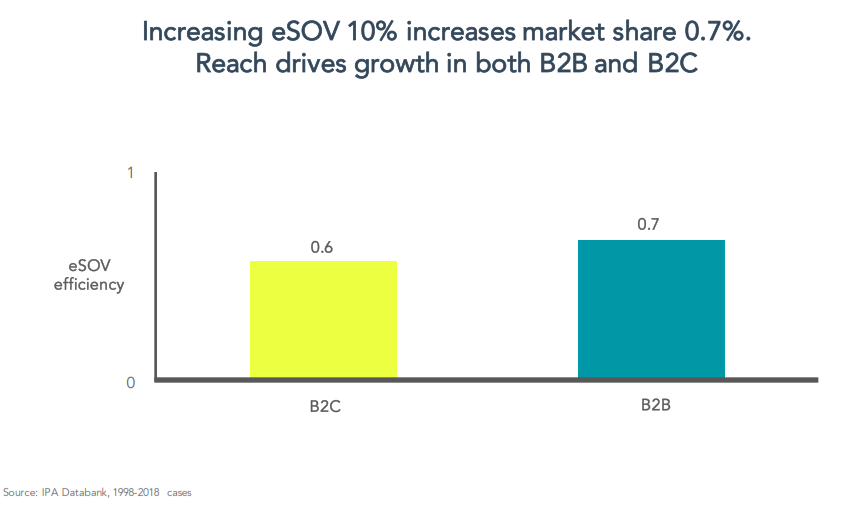
Short Term versus Long Term Investments
With the adoption of digital marketing and marketing automation, it seems like everything is measurable and tied to sales. That is definitely true on the demand gen side. However the laser-like focus on measurement comes at the expense of long-term brand awareness. Many companies have decreased spend in brand because it is not easily measurable and it isn't readily apparent that it affects revenue.
Companies have adopted the mantra – if we can't measure it, we aren’t doing it. This is very shortsighted for long-term growth.
The follow graphs illustrate the effects of short-term versus long-term investments in brand and demand gen. When you look at investments from this perspective, you see a six-month window of tactical demand gen activities give you a short uplift however it will not help grow brand because you are focused on today’s buyers versus tomorrow’s buyers.
Micro-Target versus Macro-Target
Common sense says that there is more money in the long term. You need to micro target for today's buyers (demand gen) and macro target for tomorrow's buyers (brand growth).
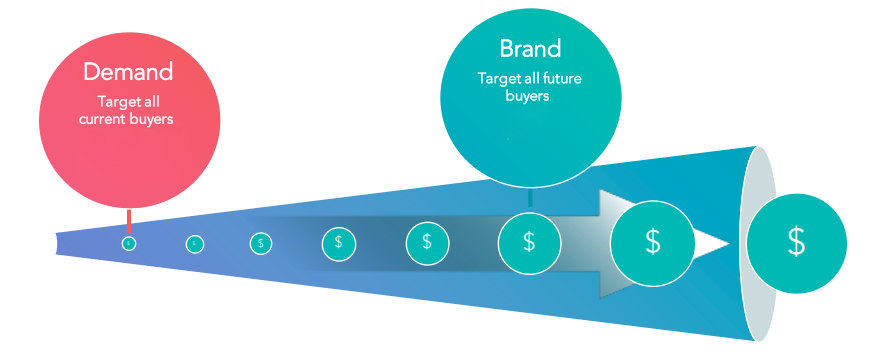
Spend Mix between Brand and Demand Gen
For B2B businesses, the average spend for demand gen is 54% of the budget. That leaves 46% available for driving long-term share-of-voice using thought leadership delivered to the market using a number of tactics such as PR, social, blogging and more. The difference is the spend mix between B2C and B2B is attributed to longer, more complex sales cycles in B2B.
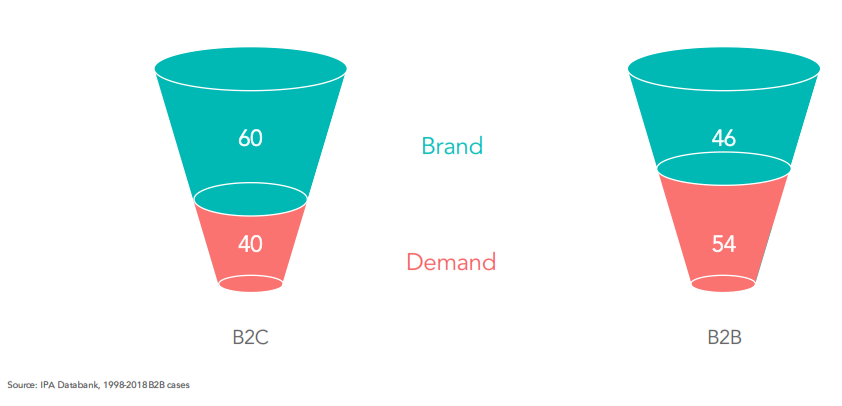
The Role of Thought Leadership in Growing Brand
Thought leadership has long been known in PR circles as the secret to success. Companies that rise to leadership positions excel at communicating industry vision, market and product/service validation through all channels including earned, paid, and owned media. In our recent blog post How to Get Great Results from a Thought Leadership Program we go into detail on the tactics used to create a great program.
There is finally research that illustrated the benefits of thought leadership and its impact on brand.
In the 2019 Edelman-LinkedIn B2B Thought Leadership Impact Study, 87 percent of business decision-makers agree Thought Leadership content increases trust in an organization, and 89 percent agree it enhances a brand’s reputation. Here are a few other stats that jump out from the report:
- 69% off decision-makers agree thought leadership is one of the best ways to get a sense for the caliber of thinking an organization can deliver
- 92% of decision-makers said thought leadership has increased their respect for an organization
- 61% of c-suite executives are more willing to pay a premium to work with an organization that has articulated a clear vision
Do you need help creating a thought leadership program?

